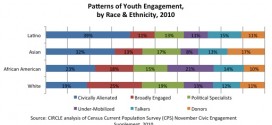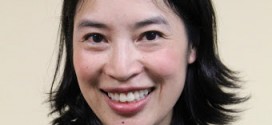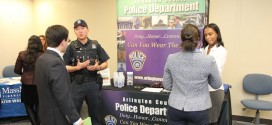By Lily Qi

We often hear public leaders say “our diversity is our strength,” which has become somewhat a cliché over the years. While I don’t doubt their sincerity in believing what they say, I wonder how many truly understand what it means to have a large, diverse, and global population in their communities.
This past weekend, I attended the Chinese Biopharmaceutical Association’s (CBA) 18th annual conference, which attracted scientists, educators, businesses and entrepreneurs from the region as well as delegations from several cities in China. It was a high-energy conference hosted by an all-volunteer crew of local community members.
CBA is hardly unique in actively making global connections between this region and the homeland of its members. For my “day job,” I oversee special initiatives for Montgomery County Executive related to innovation economy and global partnerships. In recent years, I have attended similar biotech conferences hosted by the local Indian and Korean communities.
The 21st century being the bio century and Montgomery County being the epicenter of health research and life sciences with the likes of National Institute of Health and the Food and Drug Administration, interests in such conferences were hardly surprising. For Montgomery County, this region or this country to effectively translate our unrivaled health research assets into health benefits for the world and economic opportunities for the local community, we need active facilitators to better connect the growing global markets with our medical technologies.
But of course, such opportunities don’t stop at science or biotech. There has been a proliferation of ethnic-based groups in education, science, businesses, etc., that actively facilitates global partnerships in the past decade. The rise of new economic powers such as the BRICS pack (Brazil, Russia, India, China and South Africa) and other emerging markets such as Mexico and Vietnam has energized our local communities from these countries to be community ambassadors making the local and global connections.
What stands in the way is our antiquated ways of thinking about race and diversity. The 21st century is materially different from the 20th century in how we live, work, process information and connect with one another, yet our collective mindset is still in the 20th century.
First, in spite of the rich ethnic diversity in the region, we as a society continue to see our communities through the antiquated lens of race, as whites, blacks, Hispanics or Asians, for example, rather than Russians, Ethiopians, Salvadorians and Koreans—the way people see themselves. Such framework overlooks the significance of immigration in our community dynamics and the opportunities it can present. It is no secret that many in the immigrant communities are far more engaged about global affairs half way around the world than local public affairs that immediately affect their daily lives.
From the local Burmese community’s excitement over President Obama’s historical visit of Myanmar (aka Burma) to the Brazilian community’s excitement over Brazil’s hosting of Summer Olympics 2016; from the Pakistani community being shaken by the bombs in Lahore three years ago, to the Turkish community’s concern over the current unrest in their homeland, we are reminded time and again that what’s global is local. These ties to their home countries can mean tremendous opportunities for the many globally-diverse communities in the Washington region, which has seen its immigrant population doubling since 1990.
Second, much of our diversity rhetoric still focuses on disparity reduction in accessing services or opportunities in employment, contracting and education rather than opportunities. While disparity reduction continues to be relevant and important, such exclusive focus undermines our ability to capitalize on the tremendous human capital and global partnerships.
In Montgomery County, where half of our communities are made of ethnic minorities and fully one third are foreign-born, we have established two sister city relationships in recent years in El Salvadore and Ethiopia and are on our way to establishing a sister city in China. These relationships are meant to outlast any sitting administrations or political leaders, and the process of selecting countries and cities have energized many in the community who otherwise would never have paid much attention to what a local government is doing.
Leaders and communities that understand the innate connection between the global and local are poised to gain from both community engagement and global economic, educational and cultural opportunities. It is upon both our communities and institutional leaders to capitalize on such community energy and channel it in the direction that benefits all of our communities, whether immigrant or local.
Lily Qi can be reached at qulturematters@gmail.com, or via her blog site at www.qulturematters.com.
Asian Fortune is an English language newspaper for Asian American professionals in the Washington, DC metropolitan area. Visit fb.com/asianfortune to stay up to date with our news and what’s going on in the Asian American community.
 Asian Fortune Your source for all things Asian American
Asian Fortune Your source for all things Asian American




One comment
Pingback: Translating Cultural Diversity into Global Opportunities | Work at home 101